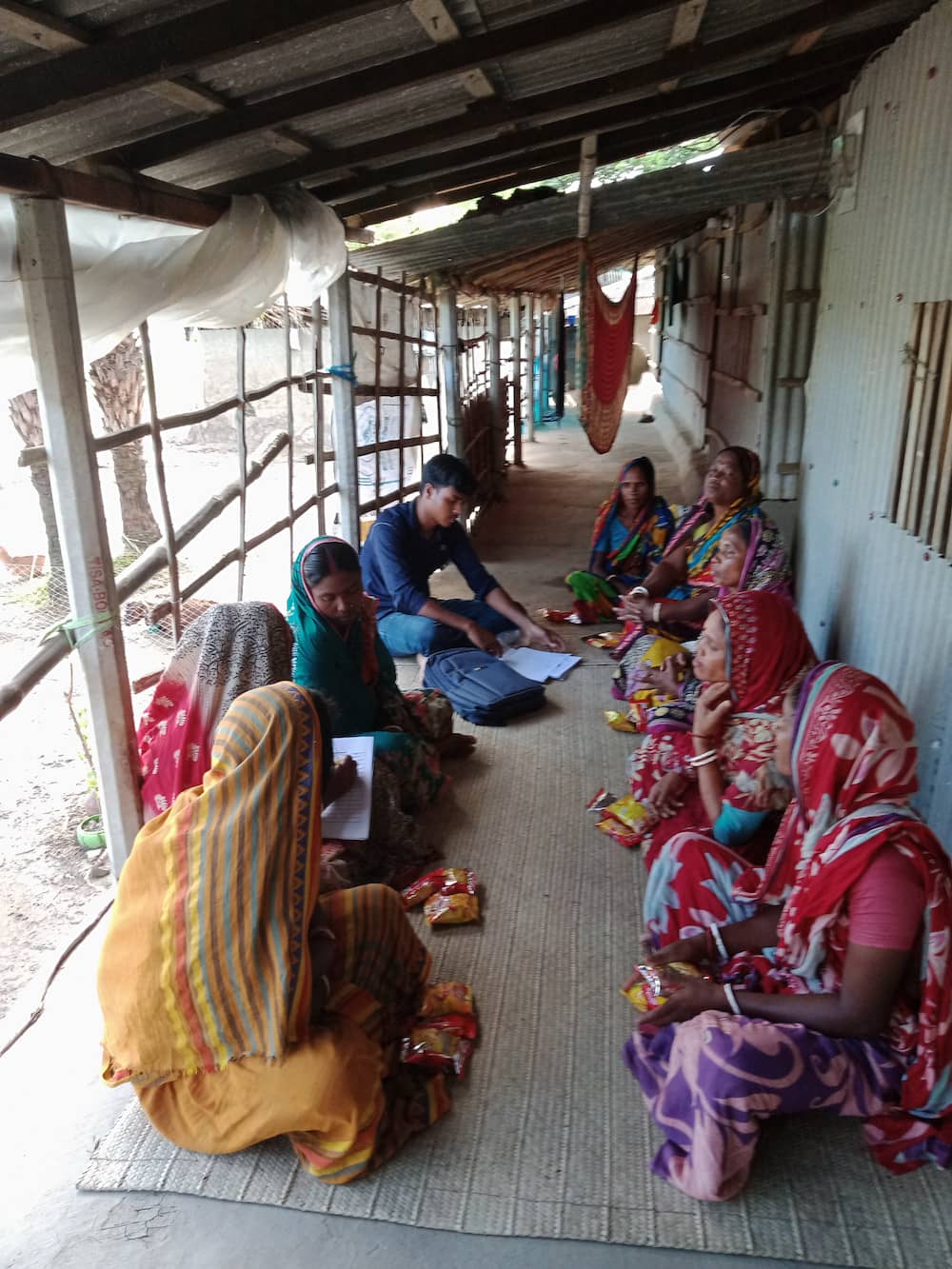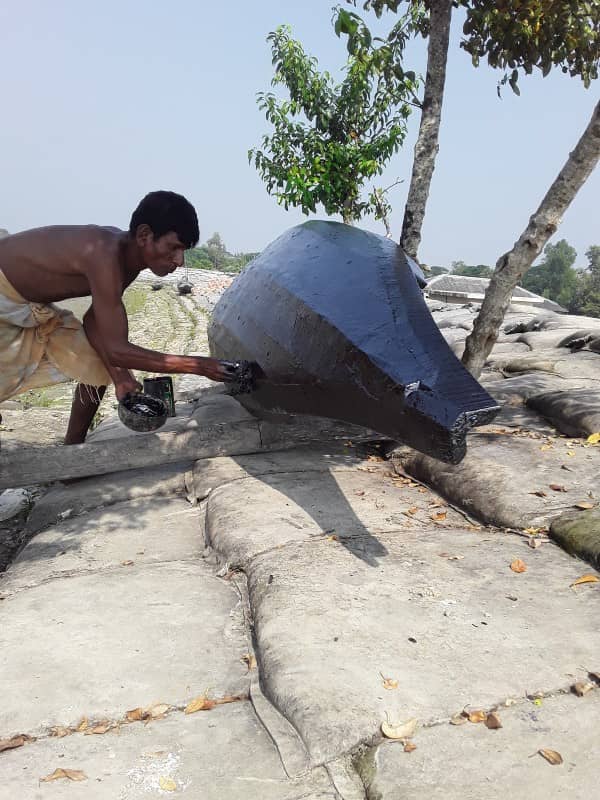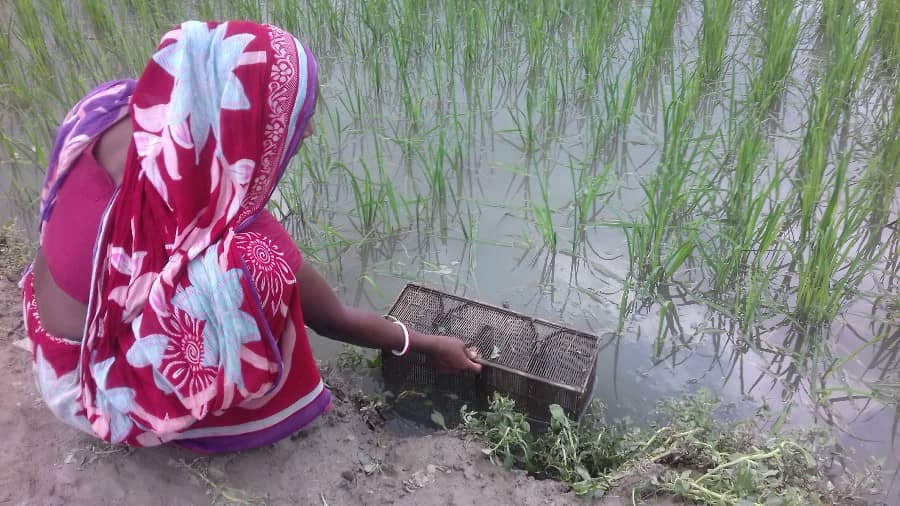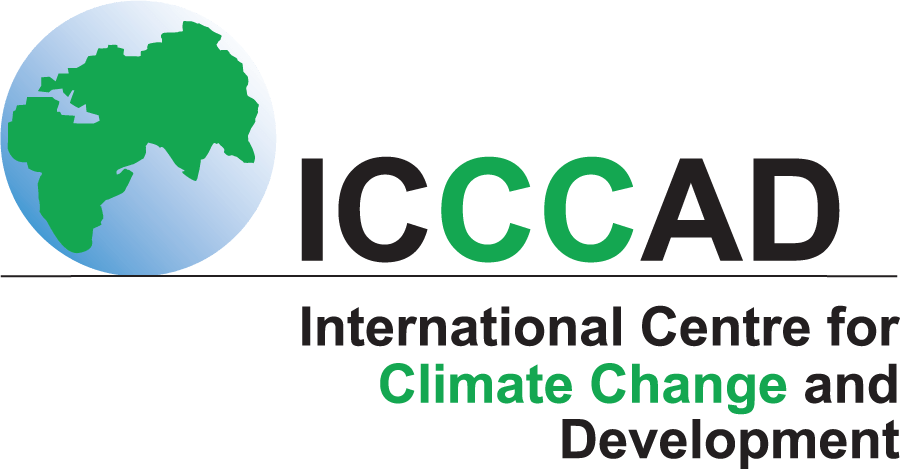
The visual methods embedded in the Bangladesh and Indian Sundarbans seek to sketch issues of vivencia (lived experiences) representing climate change, uncertainty, and transformative actions in South Asia.
Through these participatory visual action research techniques are told from the vantage points of women, youth islanders, and through children’s paintings, these methods tell mundane stories of everyday incidences of locally-led adaptation experienced in the lives of the communities that are witnessing climatic uncertainty.
These experiences gained from TAPESTRY Project in our collaboration with ICCCAD for our transboundary “Sundarbans without boundaries” journey sought to contribute to evidence building in the Gobeshona Global Conferences of 2020 and 2020.

These stories seek to raise critical questions and build new knowledge to provoke questions on equity, justice, and transformation. In addition, we complemented these stories with the children of the Sundarbans through their paintings, the voices of children, their experiences, and their re-imagination of a future landscape.
Through the visual methods the researchers have tried to systemise local experience and organize shared collective analysis of the relationship between problems and their causes. The stories also seek to encourage the process of reflection and have tried to bring forth an understanding of history in these marginal contexts.

The tales talk about the knowledge for basic survival and reflect the collective perceptions of marginalised groups. Through the visual methods the research team tried to unearth these stories of locally-led adaptation (LLA) which mirrors popular knowledge that has always been disqualified and subjugated; with elite control over knowledge being used as a way of maintaining a dominant status quo against pressures for social transformation.
Through these story-telling and visual methods we have tried to reflect on the struggles over the purpose, production and use of knowledge.
Story-telling, through visual methods, facilitates an engaged process of building knowledge thus supporting robust public and civil society engagement that can eventually foster positive social change from below. It enables various marginal communities of practice to contribute experiential knowledge, thus providing an embedded understanding of a phenomenon and thereby facilitating a shared responsibility for taking action.
As a part of a broader agenda of community participation, stories through visual methods seek to build critical consciousness within a community to construct and forge knowledge and take action (Freire, Pedagogy of the Oppressed, 1970). Forging knowledge of place through community participation, with the use of visual methods, about their local perspectives and facilitating engagement offers a robust scope for opening of a democratic space for dialogue and debate among various climate actors.
The sessions archived in the Gobeshona Global Conference are also fundamental to both understanding resilience and building the shared vision of resilience and transformation at the local level. The photos and narratives synthesize local experience and organize shared collective analysis of the relationships between problems and their causes.
The process of reflection and reflexivity is directly linked to action for climate justice and is shaped by an understanding of history, culture and local context. This provides a scope for co-creation of knowledge to support inclusion in policy, to systemize experience and draw out priorities for socially just transformations.
Originally this article was published on August 04, 2022 at Dhaka Tribune.
Shibaji Bose is an independent consultant working with participatory visual research methods. He can be reached shibbose@gmail.com.
